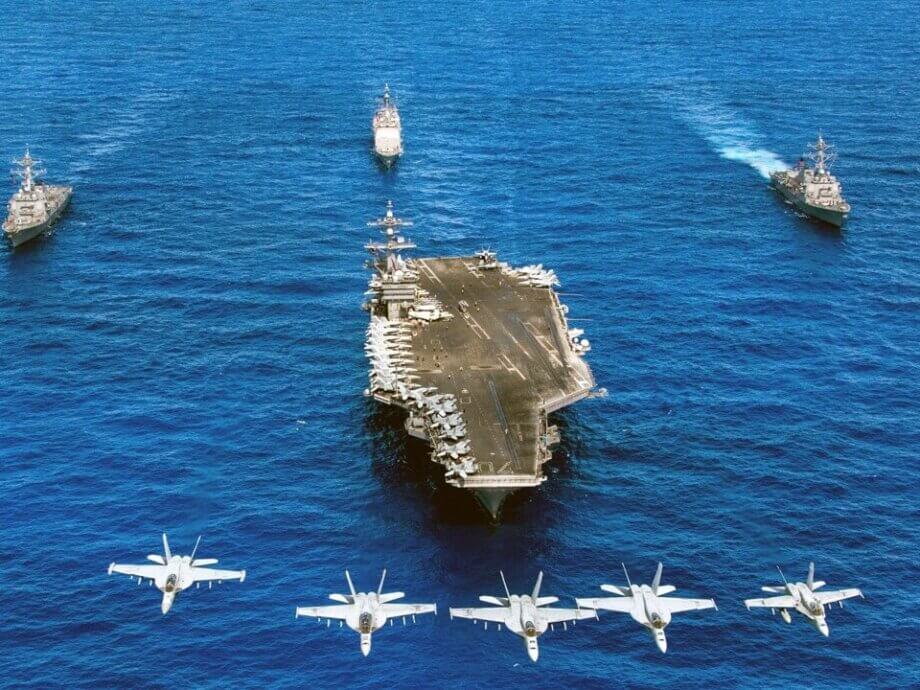Introduction: A New Era of Strategic Competition in the Indo-Pacific
The Indo-Pacific region has become the epicenter of a rapidly intensifying geopolitical rivalry between the United States and China. As China accelerates its military modernization and expands its influence across the region, the United States is responding with a significant increase in its military presence, new defense partnerships, and a reimagined approach to regional security. This article explores the drivers, strategies, and implications of the US military expansion in the Indo-Pacific, drawing on recent developments, expert analysis, and the broader context of global power competition.
- Introduction: A New Era of Strategic Competition in the Indo-Pacific
- Why the Indo-Pacific Matters: Economic and Strategic Stakes
- China’s Expanding Military and Strategic Ambitions
- The US Response: Reinforcing Military Posture and Alliances
- China’s Countermeasures and Regional Reactions
- Technological Competition: The Rise of Unmanned and Autonomous Systems
- Challenges and Uncertainties: The Role of Middle Powers and the Future of Deterrence
- Broader Implications: Global Order and the Risk of Conflict
- In Summary
Why the Indo-Pacific Matters: Economic and Strategic Stakes
The Indo-Pacific stretches from the eastern coast of Africa to the western shores of the Americas, encompassing some of the world’s busiest sea lanes, most dynamic economies, and over half of the global population. The region is vital for global trade, with critical maritime chokepoints like the South China Sea and the Strait of Malacca serving as arteries for energy supplies and commerce. Control over these waters and the surrounding territories offers substantial economic leverage and military positioning, making the Indo-Pacific a focal point for both Washington and Beijing.
Beyond economics, the region is home to several security flashpoints, including the Korean Peninsula, the Taiwan Strait, and the South China Sea. These areas are not only contested by regional actors but are also arenas where great power rivalry plays out, with the potential to reshape the international order.
China’s Expanding Military and Strategic Ambitions
China’s military buildup in the Indo-Pacific has reached unprecedented levels. Under President Xi Jinping, the People’s Liberation Army (PLA) has undergone sweeping reforms, modernizing across all domains—land, sea, air, cyber, and space. China’s defense spending has surged, with official figures showing a 7.2% increase in 2024, marking the third consecutive year of robust growth. The PLA Navy is now the largest in the world, and China’s arsenal of ballistic and cruise missiles is expanding rapidly, with a growing nuclear stockpile and advanced hypersonic capabilities.
Recent developments include the deployment of high-altitude surveillance drones like the WZ-9, the construction of a nuclear-powered supercarrier (Type 004), and the unveiling of swarming drone technologies. These advancements are designed to enhance China’s ability to project power far beyond its shores, monitor US and allied activities, and challenge the traditional balance of power in the region.
China’s strategy is not limited to military means. The Belt and Road Initiative (BRI) has seen Beijing invest heavily in infrastructure, ports, and resource extraction across the Pacific Islands and Southeast Asia, creating economic dependencies that can translate into political and strategic influence. China’s diplomatic efforts have also intensified, with new security agreements and partnerships aimed at displacing US influence and complicating allied contingency planning.
The US Response: Reinforcing Military Posture and Alliances
In response to China’s growing capabilities and assertiveness, the United States has embarked on a comprehensive effort to reinforce, reform, and redistribute its military forces in the Indo-Pacific. This includes:
- Deploying additional naval vessels and advanced aircraft to strategic locations, such as Guam, Japan, and Australia.
- Enhancing joint exercises with regional allies, including large-scale drills with Japan, South Korea, Australia, and the Philippines.
- Strengthening defense partnerships through new agreements, such as expanded basing rights in the Philippines and Papua New Guinea, and deepening cooperation with India, the UK, and other partners.
- Modernizing military infrastructure by reclaiming airfields, pre-positioning equipment, and developing missile defense and surveillance systems.
- Integrating unmanned systems—such as drones and autonomous underwater vehicles—into operational concepts to counter China’s anti-access/area denial (A2/AD) strategies.
The US military is also practicing Agile Combat Employment (ACE), which involves dispersing forces across multiple locations to increase survivability and complicate enemy targeting. The Marine Corps has redesigned regiments as mobile Marine Littoral Regiments (MLRs), capable of operating from austere locations and equipped with new missile systems.
Alliances and Multilateral Cooperation
Alliances remain the cornerstone of US strategy in the Indo-Pacific. The United States has prioritized the modernization and integration of its partnerships, particularly with Japan, South Korea, and Australia. Initiatives like the Quad (US, Japan, Australia, India) and AUKUS (Australia, UK, US) exemplify the shift toward minilateral and multilateral cooperation, enabling more flexible and coordinated responses to regional threats.
Recent agreements have focused on improving interoperability, intelligence sharing, and joint command structures. For example, the US and Japan have agreed to reconstitute US Forces Japan as a joint force headquarters, enhancing operational coordination and readiness. Australia is investing in new capabilities, such as nuclear-powered submarines and long-range missiles, while hosting rotational deployments of US forces and participating in joint exercises.
China’s Countermeasures and Regional Reactions
China has not stood still in the face of US moves. The PLA has conducted live-fire naval drills near Australia and Vietnam, increased air and maritime operations around Taiwan, and expanded its presence in the South China Sea through artificial islands and military installations. These actions are often accompanied by political signaling, aiming to demonstrate China’s reach and resolve.
Beijing’s approach combines economic incentives with coercive tactics, offering “boundless opportunity” to countries that align with its interests while issuing unmistakable threats to those who oppose it. The signing of security agreements with Pacific Island nations, such as the Cook Islands and Solomon Islands, has alarmed traditional US allies like Australia and New Zealand, who see these moves as attempts to establish a Chinese foothold in their near abroad.
Regional actors are responding in diverse ways. Some, like Vietnam and the Philippines, are seeking closer security ties with the US while maintaining economic relations with China. Others, such as India and South Korea, pursue hedging strategies, balancing their relationships to avoid being drawn into a binary choice between the two superpowers.
Technological Competition: The Rise of Unmanned and Autonomous Systems
A key dimension of the US-China rivalry in the Indo-Pacific is the race for technological superiority, particularly in unmanned and autonomous systems. The US military is rapidly integrating drones, unmanned underwater vehicles, and AI-driven platforms into its operational concepts. Programs like the “Replicator” initiative aim to deploy thousands of low-cost autonomous systems to overwhelm adversary defenses and support allies like Taiwan in a potential conflict scenario.
China, for its part, is deploying advanced surveillance drones, developing electromagnetic warfare capabilities, and investing in AI to enhance its military effectiveness. The combination of these technologies with new naval assets, such as the Type 004 supercarrier, could enable China to create a networked combat system capable of challenging US dominance at sea and in the air.
Challenges and Uncertainties: The Role of Middle Powers and the Future of Deterrence
The evolving security architecture in the Indo-Pacific is marked by a shift from unipolarity to multipolarity, with middle powers like Japan, Australia, and India playing increasingly significant roles. These countries are investing in their own defense capabilities, deepening partnerships, and participating in new minilateral groupings to enhance collective deterrence.
However, the region also faces significant challenges:
- Alliance management: US demands for increased burden-sharing and transactional diplomacy can strain relationships with allies, especially if perceived as undermining mutual trust.
- Operational readiness: The US defense industrial base faces constraints in munitions production and supply chain resilience, raising concerns about the ability to sustain a prolonged conflict.
- Legal and political obstacles: The willingness of allies to grant access to bases and territory in a crisis remains uncertain, potentially affecting US power projection.
- Regional hedging: Many countries seek to avoid taking sides, complicating efforts to build a unified front against Chinese coercion.
Experts argue that a more integrated and permanent joint deterrence force—such as a US-Australia-Japan coalition—could address some of these gaps by institutionalizing command structures, enhancing interoperability, and sharing burdens more equitably. However, achieving such cohesion requires overcoming political, operational, and strategic barriers.
Broader Implications: Global Order and the Risk of Conflict
The outcome of the US-China rivalry in the Indo-Pacific will have far-reaching consequences for the global order. The region’s future will shape the rules governing international trade, security, and the balance of power in Asia and beyond. The risk of miscalculation or unintended escalation is real, particularly in contested areas like the Taiwan Strait and the South China Sea, where military activities and political signaling can quickly spiral into crisis.
Both the US and China are investing in capabilities designed not only to deter but also to prevail in a potential conflict. War games and expert assessments suggest that the US could face challenges in sustaining high-intensity operations, especially if supply chains are disrupted or allies are reluctant to provide support. Conversely, China’s rapid military expansion and willingness to use coercive tactics raise concerns about its long-term intentions and the stability of the regional order.
In Summary
- The Indo-Pacific is the central arena for US-China strategic competition, with high stakes for global trade, security, and the international order.
- China’s military modernization and assertive actions have prompted the US to expand its military presence, modernize alliances, and invest in new technologies.
- Alliances and multilateral cooperation—especially with Japan, Australia, and India—are key to US strategy, but face challenges related to burden-sharing and operational integration.
- Technological competition, particularly in unmanned and autonomous systems, is reshaping the nature of military operations and deterrence in the region.
- Regional actors are pursuing diverse strategies, from deepening security ties with the US to hedging between the two superpowers.
- The risk of conflict remains, especially in flashpoints like Taiwan and the South China Sea, underscoring the need for robust deterrence and crisis management mechanisms.
- The future of the Indo-Pacific will be determined by the ability of the US and its allies to adapt, innovate, and maintain a credible presence in the face of China’s growing power.












